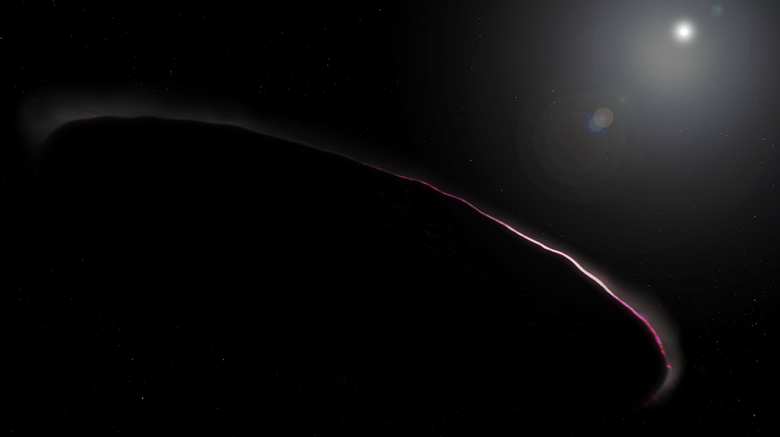Researchers propose using X-rays to study interstellar objects and reveal their composition and origin
A research team from Yale University offers advice for the next encounter with a wandering interstellar object: study its X-ray emission. Since the discovery of the interstellar object Oumuamua passing through the solar system in 2017, scientists have increasingly noted the likelihood of interstellar objects visiting the solar system.
However, there is no agreement regarding the composition and origin of these objects. Of particular interest to astronomers is whether interstellar objects accelerate as they exit the solar system, like Omuamua. The same anomalous acceleration occurs when an interstellar comet is heated by the sun. This has led some astronomers to speculate that ‘Omuamua and other space objects are made of exotic ice.

But there is a problem: if interstellar objects accelerate because they are made of ice and start to melt when they are close to the sun, there should be a trail of gas (such as water vapor or carbon dioxide) behind them. However, advanced telescopes such as the Hubble Space Telescope and the Spitzer Spectrometer have not detected gases around Omuamua.
This is a mystery that has divided the scientific community into two opinions. Some scientists believe ‘Omuamua was composed of an exotic form of ice that is invisible to most telescopes in its gaseous state, while others suggest it was an unusually light object that allowed it to shift slightly under the pressure of sunlight.
A new study led by Yale University astronomy doctor Samuel Cabot offers the possibility of some answers. Cabot and his colleagues argue that X-rays may hold the key to understanding interstellar objects.
X-ray analysis will help choose a path in the study of interstellar objects
“X-ray telescopes will be especially important when the interstellar object approaches us again. If we detect X-rays, it would indicate that there is a cloud of gas around the object, and the anomalous acceleration is likely due to the sublimation process. If we don’t see X-rays, then maybe there’s a different physics at work,” Cabot said.
The theory is based on the solar wind, which is responsible for the aurora on Earth. “Wind” is a fast flow of ionized particles. When these ions enter the cold gas, they capture electrons, emitting X-rays and photons as these electrons move to a lower energy level. This process occurs with different types of gases, even those that are invisible in the optical or infrared ranges.
“Typically, X-rays are used to diagnose the most extreme environments, such as hot gases around black holes. However, they can also be used to study planets and potentially interstellar objects,” said Daniel Wang, co-author of the study. For example, comets and planets such as Venus, Mars, and Jupiter emit X-rays—not directly, but because the solar wind collides with their atmospheres.
Cabot and his co-authors intend to test their theory by observing new interstellar objects using the LSST telescope.
“The upcoming LSST survey will give us increased sensitivity to detect these objects, which will greatly increase our capabilities and help us cover virtually the entire southern hemisphere every night. We expect LSST to discover several interstellar villains each year,” said study co-author Daryl Seligman.




